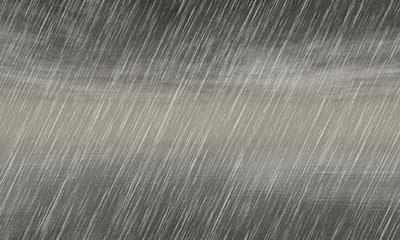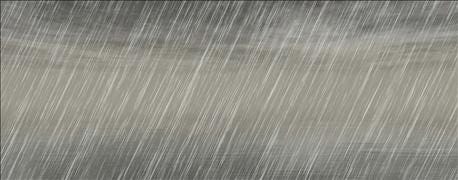
by Brian K. Sullivan
Think of it as Mother Nature’s roller-coaster ride: the shift between the weather patterns known as El Nino and La Nina that, at their worst, can cause havoc worldwide.
Related: Climate Center increases La Nina likelihood to 75%
El Nino -- spurred on by a warming of the equatorial Pacific -- has dried up rice crops across Southeast Asia, cocoa fields in Ghana, coffee in Indonesia and sugar cane in Thailand since last year. It contributed to the Western Hemisphere’s strongest hurricane on record and the planet’s warmest year since at least the 1880s.

La Nina means good rains for India. (Photo: Mihail Ulianikov/Thinkstock)
Now the ocean’s surface is starting to cool, which may signal the start of a La Nina. Scientists say this pattern typically contributes to more hurricanes in the Atlantic, drought in Brazil and heavy rain in Indonesia and India. While it might give a boost to U.S. natural gas, it could hurt Australian coal operations and palm-oil output in Malaysia. For some areas, it may be worse than a typical El Nino.
“El Nino extremes are greater, while La Nina lasts longer,” said Kevin Trenberth, distinguished senior scientist at the National Center for Atmospheric Research in Boulder, Colorado.
The cycles occur every two or three years on average and help regulate the temperature of the Earth as the equatorial Pacific absorbs the heat of the sun during the El Nino and then releases it into the atmosphere. That can create a La Nina: a “recharge state” when “the whole Earth is cooler than it was before this started,” Trenberth said.
Forecasters on two continents have issued La Nina watches for this year. Australia’s Bureau of Meteorology says the odds are about 50 percent. The U.S. Climate Prediction Center’s bet is 75 percent by December, but it says formation also could come earlier: sometime from July to September.
Peruvian fisherman centuries ago were first to notice the ocean would often warm late in the year. They called the phenomenon El Nino, after the Christ child. Modern researchers came to realize its importance to global weather in the 1960s, when they recognized the link between warm surface water and corresponding atmospheric changes. They tweaked the name to El Nino/Southern Oscillation. La Nina was named about two decades later.
The patterns aren’t simply opposite sides of the same coin. “La Nina is more like a strong case of ‘normal,”’ Trenberth said. If a region is typically dry, it could become arid in a La Nina. If it’s usually wet, there may be floods.
Greater intensity
So far, the U.S. hasn’t tried to predict how strong a La Nina might be. For both parts of the cycle, greater intensity means greater impact. The ebbing El Nino was one of the three strongest on record, generating the hottest global temperatures in more than 130 years, according to the U.S. National Centers for Environmental Information in Asheville, North Carolina. April marked the 12th consecutive month to set a new record.
El Nino also spurred the growth of Hurricane Patricia last year, which clocked winds exceeding 200 miles (322 kilometers) per hour before going ashore in Mexico.
La Ninas typically produce more hurricanes, but that may not mean more losses: What matters most is where the storms hit, according to Peter Hoeppe, head of Munich Re’s Geo Risks Research/Corporate Climate Center in Germany. And La Ninas actually have lowered the Atlantic hurricane count in some years by bringing more African sand storms -- which reduce the moisture hurricanes need -- and cooler water into the tropics, he said.
Slightly above average
Commercial and academic forecasters have said La Nina probably will cause a slightly above-average year for tropical storms and hurricanes. The 30-year normal for the June 1-to-Nov. 30 season is 12. Last year, 11 storms rose out of the Atlantic. The year before, when the El Nino was trying to get started, only eight were named. One storm, Alex, already formed this past January.
U.S.
While El Nino can produce a milder winter across the northern U.S., La Nina often brings chills to the Pacific Northwest, northern Great Plains and parts of the Midwest. For places like Iowa, a major source of corn and soybeans, timing is key, said Harry Hillaker, the state’s climatologist. If a La Nina occurs early in summer, there’s a chance for hot and dry weather, which can hurt the plants as they are pollinating.
Natural-gas producers in the U.S. “would really like La Nina,” said Teri Viswanath, managing director for the commodity at PIRA Energy Group in New York. They hope it will produce warmer temperatures in summer and the possibility for cooler temperatures in winter. “A cool winter, wow, that would be really helpful.”
Related: What causes events such as El Nino and La Nina
U.K. and Europe
For Europe, the energy prospects are more muddled. From November to December, the phenomenon could mean colder temperatures and thus higher fuel demand.
“It’s also the case that we get the unfortunate relationship of lower wind speeds during that period, so that could mean we get lower wind power,” said Hazel Thornton, manager of the U.K. Met Office’s climate-change adaptation team. After the New Year, the pattern in Europe would typically flip, with temperatures becoming milder and wind increasing.
How will La Nina impact Brazil's crops? -- >>>
~~~PAGE_BREAK_HERE~~~
Brazil
For Brazil, La Nina is more dangerous than El Nino because it hits crop production “hard,” said Eduardo Assad, a climate researcher at Brazil’s state-run agricultural research company, Embrapa. That’s because it can bring drier conditions, which also could damage the water supply, worsening Sao Paulo’s water crisis, he said.
Brazil tops the world for soybeans and oranges, and Sao Paulo is one of the cities hosting football matches for this year’s Olympic Games.
India
For India, La Nina “means good rains,” said Atul Chaturvedi, chief executive officer of Adani Wilmar Ltd., a refiner and retailer of cooking oils. “India has been reeling with poor rains for almost two years now, so La Nina for all practical purposes should be a boon.”
It might come too late to enhance this year’s monsoon, however, said Dave Streit, chief operating officer for the Commodity Weather Group LLC in Bethesda, Maryland.
Malaysia
It also may come too late to help this year’s palm-oil crop in Malaysia, with futures there rising in February to the highest in eight years.
“There is no way the emergence of La Nina, or just normal weather, will undo the damage done by El Nino,” said Ling Ah Hong, director of Malaysian plantation consultant Ganling Sdn in Kuala Lumpur. “This is something a lot of people misunderstand.”
An extreme La Nina could cause yields to fall. Flooding hurts the ability to harvest and reduces the quality of fruit, said Roy Lim, group plantations director at Kuala Lumpur Kepong Bhd., Malaysia’s third-largest producer.
Australia
For Australia, the “main negative impact” from La Nina is heavy rainfall and “a disproportionate number of major flood events,” said Blair Trewin, a climatologist with the national Bureau of Meteorology.
In 2010-2011, the pattern triggered so much rain that 85 percent of the continent’s coal production was hit by flooding. Spot prices of metallurgical coal jumped to $383 by the start of 2011 from $212 per metric ton in the third quarter of 2010, Mark Levin of BB&T Capital Markets said in a May 10 note to clients.
La Nina returned in 2011-2012, helping to boost wheat production to a record 29.9 million metric tons. It also caused vegetation to flourish in the usually arid interior -- which fueled widespread grass fires when the rains stopped.
Related: Will El Nino turn into La Nina
While the world waits to see if a La Nina will develop, there’s always a chance it could fizzle. Forecasters were certain an El Nino would form in 2014, only to see it fall apart. The prediction models are better around June and July than they are now, according to Michelle L’Heureux, a forecaster for the Climate Prediction Center.
So stay tuned.
--With assistance from Anuradha Raghu, Pratik Parija, Diep Ngoc Pham, Phoebe Sedgman, Ben Sharples, Tim Loh, Vanessa Dezem, Jessica Shankleman, Marvin G. Perez, Patrick McKiernan and Tom Randall.
To contact the reporter on this story:
Brian K. Sullivan in Boston at [email protected]
To contact the editors responsible for this story:
David Papadopoulos at [email protected]
Charlotte Porter, Melinda Grenier
© 2016 Bloomberg L.P
About the Author(s)
You May Also Like




